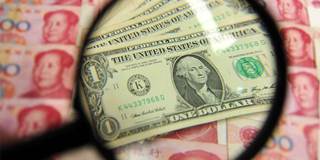The Chinese have a saying: “Take a second look; it costs you nothing.” This advice is apt in the context of China’s current stock-market volatility, the implications of which extend to the country's core strategic goal of establishing the renminbi as a global reserve currency.
LONDON – The Chinese have a saying: “Take a second look; it costs you nothing.” This advice is apt in the context of China’s current equity-market volatility, the implications of which extend beyond the immediate anxiety that the recent turbulence has provoked. In fact, this turmoil should be viewed in light of one of China’s core strategic goals: to establish the renminbi as a global reserve currency.
The renminbi’s potential to serve as a reserve currency has gained increased attention this year, as the International Monetary Fund prepares to review the currency basket that determines the value of its own reserve asset, the Special Drawing Right. The SDR was created in 1969 to supplement member countries’ official reserves. China has been campaigning for years to have the renminbi included in the basket, alongside the US dollar, the British pound, the euro, and the Japanese yen.
China’s push to secure reserve-currency status for the renminbi is understandable, given the far-reaching benefits of such a change. It would make the currency more stable and reduce the need to hold massive reserves. With policymakers no longer forced to suppress domestic demand to sustain a high level of reserves, consumption could supplant fixed-asset investment, placing China’s economy on a more sustainable growth path. Excess reserves could be allocated to sovereign wealth funds and finance projects – including through the new Asian Infrastructure Investment Bank – that extend the country’s global influence.

LONDON – The Chinese have a saying: “Take a second look; it costs you nothing.” This advice is apt in the context of China’s current equity-market volatility, the implications of which extend beyond the immediate anxiety that the recent turbulence has provoked. In fact, this turmoil should be viewed in light of one of China’s core strategic goals: to establish the renminbi as a global reserve currency.
The renminbi’s potential to serve as a reserve currency has gained increased attention this year, as the International Monetary Fund prepares to review the currency basket that determines the value of its own reserve asset, the Special Drawing Right. The SDR was created in 1969 to supplement member countries’ official reserves. China has been campaigning for years to have the renminbi included in the basket, alongside the US dollar, the British pound, the euro, and the Japanese yen.
China’s push to secure reserve-currency status for the renminbi is understandable, given the far-reaching benefits of such a change. It would make the currency more stable and reduce the need to hold massive reserves. With policymakers no longer forced to suppress domestic demand to sustain a high level of reserves, consumption could supplant fixed-asset investment, placing China’s economy on a more sustainable growth path. Excess reserves could be allocated to sovereign wealth funds and finance projects – including through the new Asian Infrastructure Investment Bank – that extend the country’s global influence.